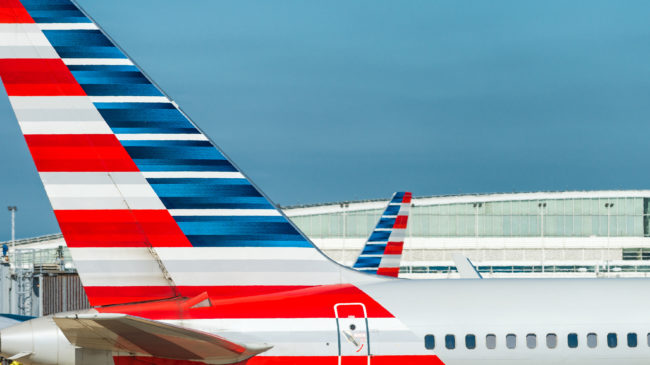The grants and loans being provided to U.S. airlines under the Coronavirus Aid, Relief, and Economic Security (CARES) Act impose a form of re-regulation on what, since 1978, has been a competitive industry. In exchange for the CARES Act money, airlines are required to continue serving all the points they served on the date the coronavirus stimulus bill passed, regardless of whether they have any passengers. That is absurd.
I grew up when airlines were heavily regulated by the (now-defunct) Civil Aeronautics Board (CAB). Usually, only one or two airlines were authorized to fly any route, and changes in routes or frequencies were few and far between. Sometimes many years would go by without any new routes being approved. The result was effectively a cartel of “legacy” airlines, charging high fares so that the least-efficient ones could stay in business.
It was only when Congress, in 1978, dismantled pervasive regulation that airlines could choose where and when to fly, charging whatever they could, and with no legal barriers to new entrants. Flying changed from an elite service to a mass-market—the democratization of air travel.
The idea of the federal government freezing all existing service in place reminded me of a directive announced by the national government in Ayn Rand’s novel Atlas Shrugged. Under Directive No. 10-289, to achieve stability during a national economic emergency, all workers were attached to their existing jobs for the duration. Every business was required to produce the same amount per year as it produced during the base year. There was more, but you get the idea. Instead of the dynamism of the marketplace, Directive 10-289 imposed stasis.
To be sure, the fine print of today’s airline “minimum service requirements” provides for exceptions. If an airline flies to several airports in the same metro area, it must serve at least one of them. Routes served only on a seasonal basis (e.g. summer) must continue during that season only. And carriers that have provided service on a route at least five days a week must provide at least one flight a day for five days each week. But airlines must still ask the US Department of Transportation (DOT) for these favors, and DOT can at least partially refuse.
How is that working out for them? Those most at risk from the stasis requirements are the ultra-low-cost carriers: Allegiant, Frontier, and Spirit. They have been a powerful force for competition with legacy airlines. They seek out niche markets ignored by the major carriers, operate mostly point-to-point to avoid missed connections at hubs, and charge much lower fares than the big guys. They have not done very well getting exemptions.
Spirit requested permission to drop service to 26 points, but DOT approved only one deletion— regional airport Aguadilla in Puerto Rico. DOT approved only three of Frontier’s 33 exemption requests. Allegiant had slightly more success. It asked to reduce frequencies on 21 routes, estimating that maintaining existing frequencies would require 290 needless round-trips, costing $4.7 million, not including labor. It got only 11 of the 21, partly by showing that its clientele was almost entirely leisure travelers.
One can imagine the hapless planners at DOT, forced to pretend they are CAB central planners, trying to redesign U.S. airline service, to be frozen for the duration. It’s an impossible and foolish exercise, with no “right” answers.
Commercial aviation is inherently dynamic. Vacation/leisure destinations have specific high-travel seasons, and some carriers don’t serve those locations at all, off-season. Smaller airlines continually fine-tune their schedules, responding to changes in market demands (e.g., only three flights a week for very thin routes, five or six a day for more-popular routes) and often add new cities or drop routes that didn’t pan out at what look to outsiders like random times during the year.
The attempt to freeze service levels at some arbitrary point in time ignores this dynamism, which the majors also practice. Some of the few exemptions granted do take into account that many tourist destinations have no travel because the hotels and resorts are closed. So Hawaiian Airlines was allowed to drop its routes from all eight mainland markets, and United was allowed to drop service to four airports in Hawaii. But its exemptions for Key West and San Juan were denied.
Ominously, the biggest airlines—American, Delta, and United—did better in central planning. American requested only 12 exemptions. Most are seasonal routes, and another is mainland-to-Hawaii service. Delta got most of the seasonal exemptions it asked for but is asking DOT to reconsider letting it drop nine smaller airports. United fared worse, getting the OK for seven but having a dozen more vetoed. JetBlue and Alaska scored somewhere in between these legacy carriers and the low-cost ones.
It’s easy to say that airlines that seek and accept government funding must accept the strings Congress attaches. But in fact, those strings will still result in hundreds of nearly empty planes flying all summer, when no market-based business would operate them.
DOT was handed an impossible task, and it should have had the courage to grant far more of the requested exemptions. Central planning of airline service was a bad idea during the Civil Aeronautics Board era—and it’s still a bad idea 42 years later.

